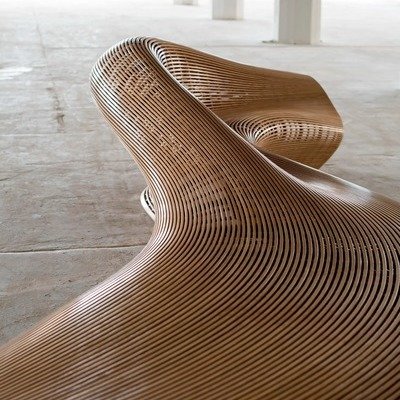Silicon City: Computer History Made in New York
We venture to guess that most people won't jump to name New York as a central hub of the technological era, but as the New York Historical Society (NYHS) exhibition "Silicon City" demonstrates, the forebears of the modern computer were working on the East Coast rather than the West. Through 300 artifacts and archival materials, the exhibit retells the lesser-known narrative of the digital revolution, celebrating New York's role in transforming the innovations that define our lives today.
It all begins with the 1964 New York World's Fair, where the public was first introduced to computing at the IBM Pavilion. Visitors to the NYHS are similarly welcomed by a version of the multimedia installation called "THINK" that was put on by Charles and Ray Eames inside the theatre designed by Eero Saarinen, popularly known as "the egg." From here, the exhibition's timeline progresses through a series of thematic sections beginning with the earliest innovations that set the groundwork for the computer revolution—Samuel Morse's Electric Telegraph (1840s), Thomas Edison's early light bulbs (1880s) and the punched card machines of the 1890s. The exhibit considers the evolution of computing from military research led machines in the World War II era, all the way through the various leaps that eventually led to the personal computer we are all too familiar with. Along the way, the exhibit highlights the important role women played in developing the field of programming.
New York emerges as a nerve center of innovation. It was the place where AT&T and Bell Laboratories led the way with research that generated pivotal inventions like the first transistor in 1947 and Telstar 1, the satellite used to transmit the first live images from space in 1962, along with developing the infrastructure necessary to support the Internet: digital phone lines, fiber optic cables and satellites. Later, Bell Labs led the development of electronic music and visitors will be happy to see some early computerized musical instruments on display.
The end of the exhibition focuses on the relationship between technology and design, with a showcase of IBM's evolving branding identity and iconic ephemera produced by designer Paul Rand. Although the industry shifted to the West Coast in the 1980s, New York is currently undergoing a technological revival with several key companies setting their roots within the city. The exhibition closes on this optimistic note, with a multimedia presentation mapping these offices and sharing insight from their leaders.
"Silicon City" is on view at the New York Historical Society through April 17, 2016.
-
o1Favorite This
-
QComment
K
{Welcome
Create a Core77 Account
Already have an account? Sign In
By creating a Core77 account you confirm that you accept the Terms of Use
K
Reset Password
Please enter your email and we will send an email to reset your password.




